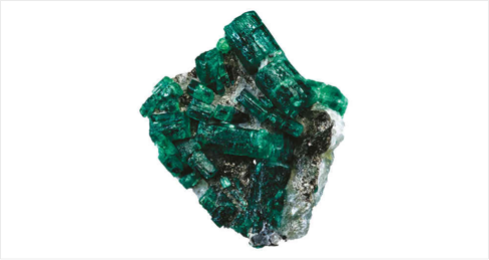
Experts recognize that the characteristics of this gem are unmatched. Is it due to its color? Does our soil have something special? Here we tell you.
The Muzo Indians, settled in the Eastern Cordillera, fought bloody battles with their conquerors to avoid revealing the deposits where the emeralds were found. Finally, the Spanish ended up discovering these places and with the passage of time their brilliance shone in Europe. Today, Colombia is the largest producer and stands out for the extraordinary quality of these gems, considered the best in the world.
The country competes with Zambia, Brazil and Afghanistan, nations that also enjoy a recognized emerald tradition. Every year, these countries discover in their subsoils veins or rocks with a significant amount of embedded emeralds. Those of Zambia and Brazil are characterized by being very opaque, while the Afghans resemble the Colombians, which are still the most desired.
Our color is green
Colombia is covered in green from the jungles to the plains. Beyond that color that varies in shades and extends throughout the territory like a patchwork quilt, the iconic intense bluish green of the emeralds hidden among the vast mountains of the departments of Cundinamarca and Boyacá stands out.
“On the scale of tonality, the Colombian emerald is the most balanced. Not very black, not very clear ”, explains Carlos Osorio, a graduate of the Gemological Institute of America, a prestigious gem research center. Óscar Baquero, president of Fedesmeraldas, considers that this characteristic distinguishes it notoriously from the others and allows it to “have a perfect saturation”.
Their large size and deep clarity are other properties that make emeralds a gemstone like no other. The largest in the world come from Colombia. At about three pounds, the Emilia emerald is considered the most beautiful and of the best quality. Some miners found it in Gachalá (Cundinamarca) in the late sixties.
Its exceptional clarity makes it an extraordinarily clean gem, with very little presence of pyrites, calcites and other minerals inside. That is, very few elements affect its brightness. Colombian emeralds are also recognized for their hardness, which allows them to resist scratches, although not too strong blows; and elegance. Whoever wears them must be as delicate as the stones they wear.

Nature in favor
Emerald is the green variety of a colorless mineral called beryl and is made up of aluminum, silicate oxide, and three important elements known as impurities: chromium, iron, and vanadium.
If all the emeralds on the planet have the same chemical composition, why do the Colombian ones boast of having special qualities? Osorio says that these “green stones” were formed during the Quaternary period, in which the Earth underwent a profound transformation: The mountains became a valley and the valleys became mountains. “Boyacá, and part of the Eastern Cordillera were ocean,” he says.
In this department, according to Osorio, lie the only hydrothermal deposits in sedimentary rock of marine origin in the world. In other words, Colombian emeralds were formed in an environment of water, which gave them the natural clarity that characterizes them. Likewise, their search is much more complex, because it is as if the gas – which was mineralized to become emerald, had spread on the rocks.
“In addition to clarity, the color gives great value to the Colombian emerald. The bluish green is due to the sedimentary rock of marine origin ”, says John Zapata, gemologist at the Esmeralda Technological Development Center (CDTEC). Shimmering chrome, leveled vanadium, and iron (to a lesser extent) give the beryl, its hue and make it an emerald.
Likewise, the stones extracted from departments such as Boyacá, have their impurities and compounds leveled. If it had more iron, the emerald would be too dull of a green, like the Brazilian. And if vanadium was the protagonist, as it happens in Zambia, it would look more yellowish. “I do not like yellow,” says Osorio. “It is the perfection of nature,” he adds with a smile. Hence the magic of Colombian emeralds.